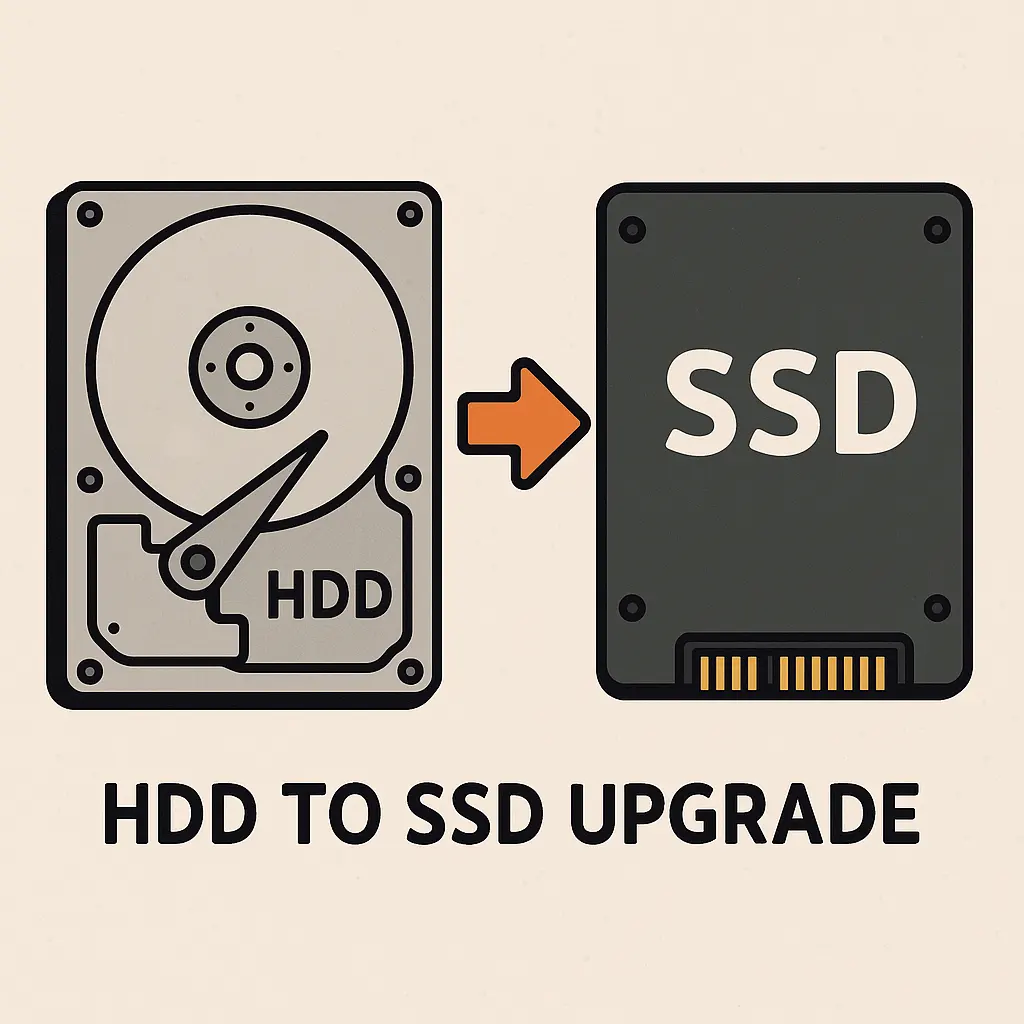From HDD to SSD: The Ultimate DIY Guide for a Faster PC
Upgrading your computer’s storage from a traditional Hard Disk Drive (HDD) to a Solid State Drive (SSD) is one of the most effective ways to boost your system’s performance without breaking the bank. Whether you’re a DIY enthusiast or looking to save on repair costs, this comprehensive guide will walk you through the process step-by-step. At Easy-PC, we proudly serve Natick, MA, and nearby communities including Wellesley, Needham, Holliston, and Hopkinton, offering expert advice and quality computer repair services.

Understanding the Difference: HDD vs. SSD
Hard Disk Drives (HDDs) use mechanical components to read and write data, which can result in slower performance due to physical movement. In contrast, Solid State Drives (SSDs) have no moving parts, relying on flash memory to provide:
- Faster Boot and Load Times: Your operating system and applications start almost instantly.
- Increased Durability: SSDs are more resistant to shocks and drops.
- Lower Power Consumption: Better energy efficiency for laptops and desktops.
Benefits of Upgrading to an SSD
Upgrading from an HDD to an SSD offers a myriad of benefits, including:
- Enhanced Speed and Performance: Experience rapid boot-ups, quick file transfers, and overall snappier system response.
- Improved Multitasking: Run multiple applications smoothly without lag.
- Quiet Operation: Eliminate the noise associated with spinning disks.
- Lower Failure Rates: SSDs tend to be more reliable over time.
- Energy Efficiency: Reduce power usage, which is especially beneficial for laptop users.
Tools and Preparation for Your SSD Upgrade
Before you begin the upgrade, ensure you have the right tools and have taken the necessary precautions:
- Essential Tools: A Phillips-head screwdriver, an anti-static wristband, your new SSD (make sure it’s compatible with your system), cloning software (if you plan to transfer your existing data), and a USB-to-SATA adapter (optional).
- Preparation Steps: Backup your data, review your PC’s manual, and plan your upgrade strategy.
Step-by-Step HDD to SSD Upgrade Process
- Back Up Your Data: Always safeguard your important files using backup software or an external drive.
- Gather and Prepare Your Tools: Organize your screwdriver, anti-static wristband, SSD, and necessary cables in a clean, static-free workspace.
- Power Down and Unplug Your PC: Shut down your computer and disconnect all cables to minimize the risk of electrical damage.
- Open Your Computer Case: Remove the side panel of your desktop or access the storage compartment of your laptop. Consult your device’s manual if needed.
- Remove the Old HDD: Locate your HDD, disconnect both the power and data cables, and carefully unscrew it from its mounting bracket.
- Install the New SSD: Place the SSD in the drive bay or use an adapter if necessary, then secure it with screws and reconnect the appropriate cables.
- Clone Your HDD or Perform a Fresh Install: Use reliable cloning software to transfer your operating system and data, or perform a fresh installation if you prefer a clean start.
- Reassemble and Power On: Once the SSD is securely installed, reattach your computer’s panel, plug everything back in, and verify that the SSD is recognized.
- Optimize Your SSD: Enable TRIM (if not already active), update your firmware and drivers, and uninstall any unnecessary software to maximize performance.
Troubleshooting Common Issues
Even with careful planning, issues may arise during your upgrade. Here are some troubleshooting tips:
- SSD Not Detected: Double-check all cable connections and consult the manufacturer’s website for firmware updates or compatibility information.
- Cloning Errors: Verify that your cloning software is compatible with your system; if problems persist, consider performing a fresh installation.
- Boot Problems: Ensure your BIOS settings are configured to boot from the SSD by adjusting the boot order if necessary.
Why Choose Easy-PC?
At Easy-PC, we empower our customers with expert advice and professional repair services. Serving Natick, MA, and nearby communities like Wellesley, Needham, Holliston, and Hopkinton, our experienced technicians are ready to help if you encounter any challenges during your upgrade. We are committed to quality service and customer satisfaction, ensuring a seamless transition to a faster, more reliable SSD system.
Additional Resources and Next Steps
This article is the first in our series on computer upgrades and repairs. Stay tuned for more in-depth topics such as:
- Optimizing System Performance After an SSD Upgrade
- How to Safely Dispose of Old HDDs
- Troubleshooting Common PC Issues
- Maximizing the Lifespan of Your SSD
For personalized support, feel free to contact us or visit our store.
Conclusion
Upgrading from an HDD to an SSD is a cost-effective way to rejuvenate your computer. With careful planning, the right tools, and a systematic approach, DIY enthusiasts can enjoy significant performance improvements. Remember, if you’re in Natick, MA, or nearby areas like Wellesley, Needham, Holliston, and Hopkinton, Easy-PC is your trusted partner for all your computer repair and upgrade needs. Start your upgrade today and experience a faster, more efficient PC!
For more expert advice on computer repairs and upgrades, contact Easy-PC – your trusted partner for all your computer service needs in Natick, MA and beyond.